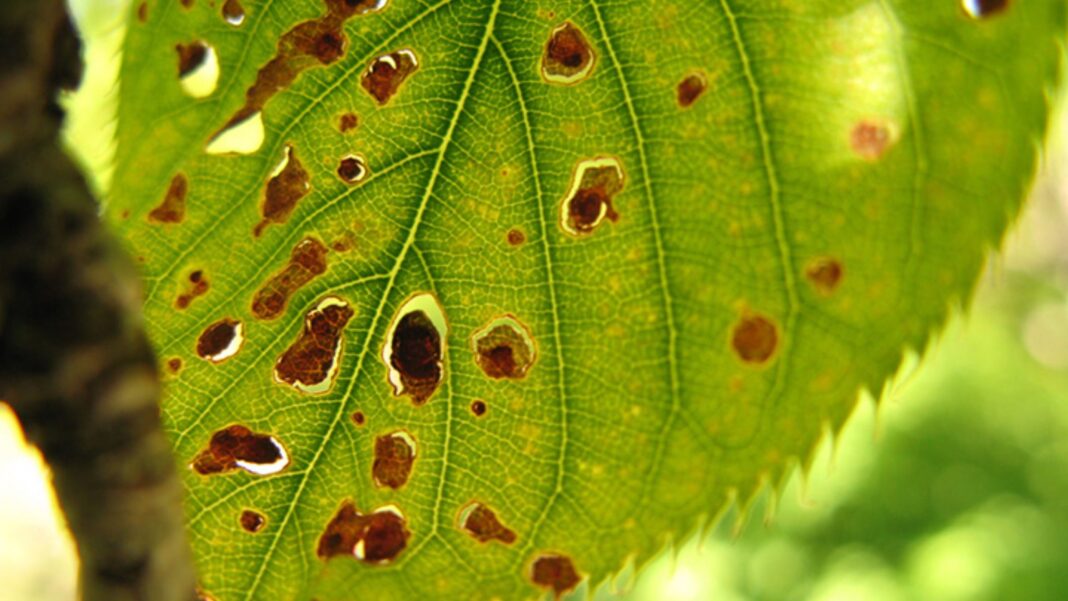Fruit trees are a fantastic addition to any garden, providing delicious produce and beautiful blossoms. However, these trees are also susceptible to various diseases and pests, which can lead to a diminished harvest or even the death of the tree. In this article, we will discuss common fruit tree diseases and pests, as well as ways to identify and treat these problems to ensure a healthy, bountiful harvest.
Apple Scab
Apple scab is a fungal disease affecting apple and pear trees, caused by the fungus Venturia inaequalis. This disease presents as dark, olive-green to black spots on leaves, fruit, and twigs. If left untreated, the spots can cause leaves to yellow and fall prematurely, while infected fruits become deformed or drop prematurely.
Treatment:
Prune affected branches and remove fallen leaves to reduce the spread of the fungus.
Apply a fungicide during the growing season, following the manufacturer’s instructions.
Choose resistant varieties when planting new trees.
Fire Blight
Fire blight, caused by the bacterium Erwinia amylovora, is a contagious disease affecting apple, pear, and quince trees. This disease causes wilting and blackening of leaves, twigs, and fruit, giving the appearance of having been scorched by fire. In extreme cases, the entire tree may perish.
Treatment:
Prune affected branches well below the infected area, and sterilize pruning tools between cuts.
Apply a copper-based bactericide as a preventative measure during the growing season.
Choose resistant varieties when planting new trees.
Powdery Mildew
Powdery mildew is a fungal disease affecting a wide range of fruit trees, including apples, pears, cherries, and plums. The fungus appears as a white, powdery coating on leaves, twigs, and fruit, causing distortion and stunted growth.
Treatment:
Prune affected branches and remove fallen leaves to reduce the spread of the fungus.
Apply a fungicide during the growing season, following the manufacturer’s instructions.
Ensure good air circulation around the tree by proper spacing and pruning.
Peach Leaf Curl
Peach leaf curl is a fungal disease affecting peach and nectarine trees, caused by the fungus Taphrina deformans. This disease presents as reddish, curled, and distorted leaves, which may turn yellow and fall prematurely.
Treatment:
Remove affected leaves and dispose of them properly.
Apply a copper-based fungicide during the dormant season to prevent the disease.
Choose resistant varieties when planting new trees.
Aphids
Aphids are small, soft-bodied insects that can infest various fruit trees, including apples, pears, and cherries. These pests feed on the sap of the tree, causing curled and distorted leaves, stunted growth, and the production of a sticky substance called honeydew, which can lead to sooty mould.
Treatment:
Release beneficial insects, such as ladybirds and lacewings, to control aphid populations.
Use insecticidal soap or horticultural oil to treat infestations.
Encourage natural predators by planting a diverse range of flowering plants around your fruit trees.
Codling Moth
Codling moths are a common pest of apple and pear trees. The larvae bore into the fruit, causing extensive damage and making the fruit inedible.
Treatment:
Use pheromone traps to monitor and control adult moth populations.
Apply a suitable insecticide during the growing season, following the manufacturer’s instructions.
Encourage natural predators by providing habitats for birds and bats.
Conclusion:
Fruit tree diseases and pests can pose a significant threat to the health of your trees and the quality of your harvest. Use the Chris Bowers & Sons website or call them for learning to identify these common problems and applying the appropriate treatments for the fruit trees you find for sale there, you can help protect your fruit trees and ensure a bountiful harvest.
In addition to the treatments mentioned above, remember that maintaining overall tree health is crucial. A healthy tree is better equipped to withstand and recover from disease and pest attacks. Regular pruning, proper watering, and fertilizing will all contribute to the overall health of your fruit trees.
By staying vigilant and proactively addressing fruit tree diseases and pests, you can enjoy the satisfaction of growing your own fruit and the many benefits it provides, from beautiful blossoms to delicious, home-grown produce. So, roll up your sleeves, keep an eye out for these common issues, and enjoy the fruits of your labour!


























